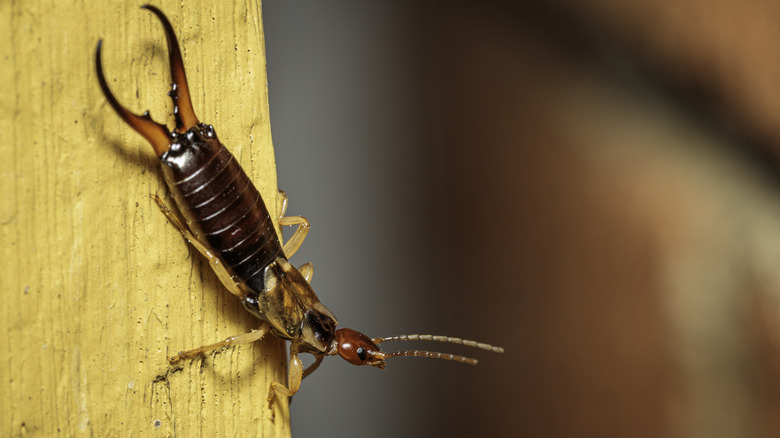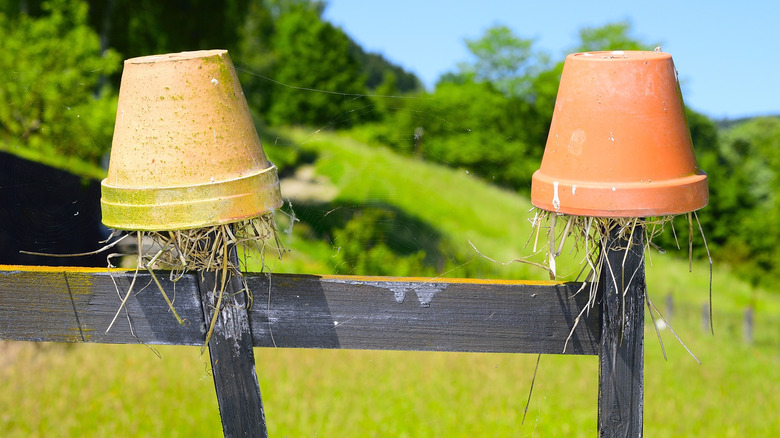Reuse Your Plastic Nursery Pots To Get Rid Of Earwigs
We may receive a commission on purchases made from links.
There are so many creative ways to reuse those plastic nursery pots, as opposed to simply tossing them in the bin. They can be used as mini shovels to help scoop out mulch and soil, hung as convenient storage containers for your smaller garden tools, or even transformed into creative DIY bird houses. Another effective way to use these plastic pots is to catch earwigs. Earwigs are those 3/4-inch long, reddish brown creatures with the forceps-like appendages that you may find nibbling away at your garden plants. There are a couple of ways to upcycle those used plastic nursery pots and turn them into homemade earwig traps.
Earwigs thrive in damp areas and are naturally omnivorous. They are also predators of aphids and other soft-bodied garden insects, which is why they serve a useful purpose in many cases. Unfortunately for gardeners, they also love to feast on seedling plants, soft fruit, and decaying organic matter. Though these small bugs are beneficial to a garden's ecosystem, they are voracious eaters and can destroy your plants and flowers. They can even become annoying pests once they find their way around your home. One method to repel these unwanted pests involves gathering a few leftover Oupsaui nursery pots, some Maqihan natural straw, and Hainanstry plant stakes. The other nursery pot trap involves vegetable oil and soy sauce to help lure in these uninvited guests. All the materials for both methods can be purchased for less than $10, making these hacks not only effective but affordable.
How to create earwig traps using upcycled plastic nursery pots
One of the most practical ways to keep earwigs out of your house is by removing their backyard hangout spots. To do this using the first nursery pot method, start by filling a pot with straw and dampen it with water until it becomes moist. Next, take a stake and stick it in the ground in an area of infestation. Then mount the nursery pot on top of it so that it is the same height as nearby flowers. This inviting setup will bring in the earwigs seeking a moist location. Leave the pot for a day or two, or empty it as needed.
For the second method, dig a hole in the ground that is large enough to fit a small nursery pot. Fill your pot with about 2 tablespoons of each of the following: water, vegetable oil, and soy sauce. Poke a few holes in the bottom of another larger nursery pot (if it has none) and place it over the first pot upside down. This will attract earwigs, where they will become stuck in the oily mixture at the bottom.
If you notice earwigs loitering around the perimeter of your home, place a few of these traps in these areas as well. It is also a good idea to remove any outside materials where they may gather such as leaf piles, bark mulch, wood piles, and uncovered garden soil. And remember to seal any cracks or noticeable entry points around your home's foundation, windows, or doors. Earwigs are nocturnal, so set your traps during daytime hours.

